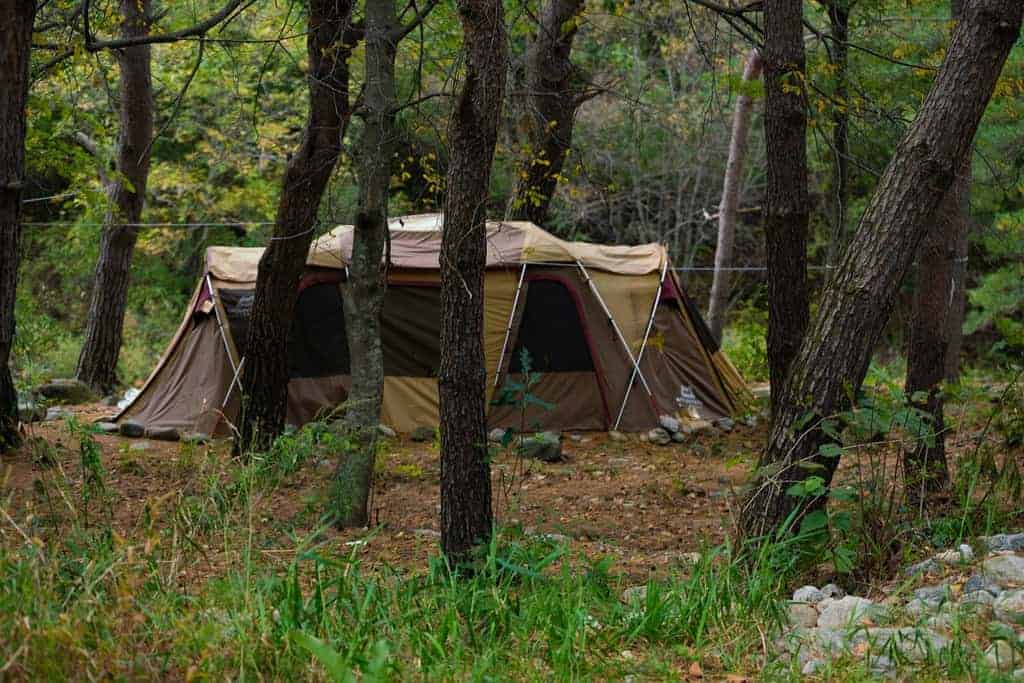Winter camping is an excellent opportunity to experience something new and have fun with friends during the cold season.
With a wide variety of activities available in winter and tents for camping in cold weather, getting out into nature, even in low temperatures, is not something extremely difficult or scary. The main thing here is to properly prepare and take everything you may need to feel comfortable and safe while camping.
Unlike the summer season, which is usually associated with travel, winter camping is popular among many enthusiasts as well. However, here you need to pay more attention to the preparations. Ideally, when someone who already has experience of such trips goes with you.
But if you are a beginner and looking for a new experience, winter camping is a great option. All you need to do is plan a trip and choose a place where it is easy to get to because it is best to be close to civilization on your first camping trip.
Let’s take a look at the essential things you need to consider, as the success of your winter camping may depend on it.
Packing
One of the crucial tips is to make a winter camping checklist or look it up online if you don’t know what to bring. Now there are many specialized websites available where you can easily find a checklist for different types of camping.
The main thing we want to pay attention to is clothing. Avoid cotton clothing when packing, as this fabric causes heat loss quickly. It is best to buy clothes in ski or mountaineering stores.
Dress in several layers:
- The top layer of clothing should be made of synthetic water-repellent fabrics. Its task is to prevent water ingress and protect from moisture.
- The inner layer of clothing should retain heat well and keep you warm during cold weather.
Take a few pairs of warm socks and an extra pair of winter boots with you, as it is essential to keep your feet dry. Also, ensure such parts of your body as the hands, neck, head, and legs are well protected, as they lose heat the fastest.
As a bonus, you can take hand and foot warmers with you, as well as compact shoe dryers.
Fire
A campfire is a must-have during every trip, as it allows you to warm up, prepare food and drinks, or just hang out with friends at the end of the day.
However, it may not be easy to build a fire in the case of winter camping, especially if you are a beginner.
Therefore, be sure to take the following things:
- Waterproof fire starters for camping or hunting and lighters (at least two items).
- Firewood or charcoal (because wood absorbs moisture in cold weather, you may not be able to start a fire, so it is essential to take dry firewood with you).
- Liquid fire, as well as paper or other things that can be used to start a fire.
It is important to note that before you start anything, dig a hole for the fire so that it does not go out from melting snow or strong winds.
Sleeping
The perfect option for winter camping is to buy a tent with a stove that can heat and maintain a comfortable temperature inside your shelter.
At the same time, attention should be paid to tent accessories for camping. For example, footprint, flooring and tarp can help keep the warmth inside the tent and moisture out.
When choosing a sleeping bag, look for models suitable for extreme cold weather (between 5℉ and 40℉).
Also, use heating pads that you can put inside your sleeping bag to keep the temperature comfortable for sleeping. As a bonus, you can put your gadgets or batteries near a heating pad at night to protect them from the harmful effects of the cold.
Camp
When choosing a site where you would like to camp, consider the following points:
- Don’t set up your tent on top of a mountain (because the winds are much stronger there).
- Avoid sites with dry trees (because a dry branch can break off in a sharp gust of wind).
- Start preparing your campsite at least two hours before sunset.
Level the area with a shovel before setting up the tent. As a bonus, you can build small snow walls around the camp to provide additional protection from the wind.
Finally, before choosing a site, research the location. Find out if there is a risk of avalanches in the area, and also look at the map for water bodies, as sometimes rivers or lakes can be covered with snow, which is why there is a risk of falling through the ice.
Your campsite should be conveniently located and easily accessible for entry/exit.
Safety
Safety is a top priority on any trip. And in the case of winter camping, the issue of safety becomes even more critical.
Prepare a first aid kit in advance. Make sure you take antiviral and antipyretic medications. Also, it is worth having antiseptics, a bandage and a band-aid.
In addition, keep your body hydrated. Take a thermos with you and make warm drinks often so you don’t get cold. Avoid excessive alcohol consumption as it causes the body to lose heat faster.
One of the most important steps is choosing a location. Try to learn as much as possible about the place before you go:
- Find out the possible risks (avalanches, storm warnings, water bodies, wildlife and predators, etc.).
- Learn routes (it’s better to know several ways to get into or out of the camp).
- Pay attention to the infrastructure (amenities, the location of hospitals or pharmacies nearby, shops, hotels, etc.).
- Learn the rules and laws of the place where you are going (national parks or forests may have some restrictions, so it’s worth knowing them in advance to avoid fines).


